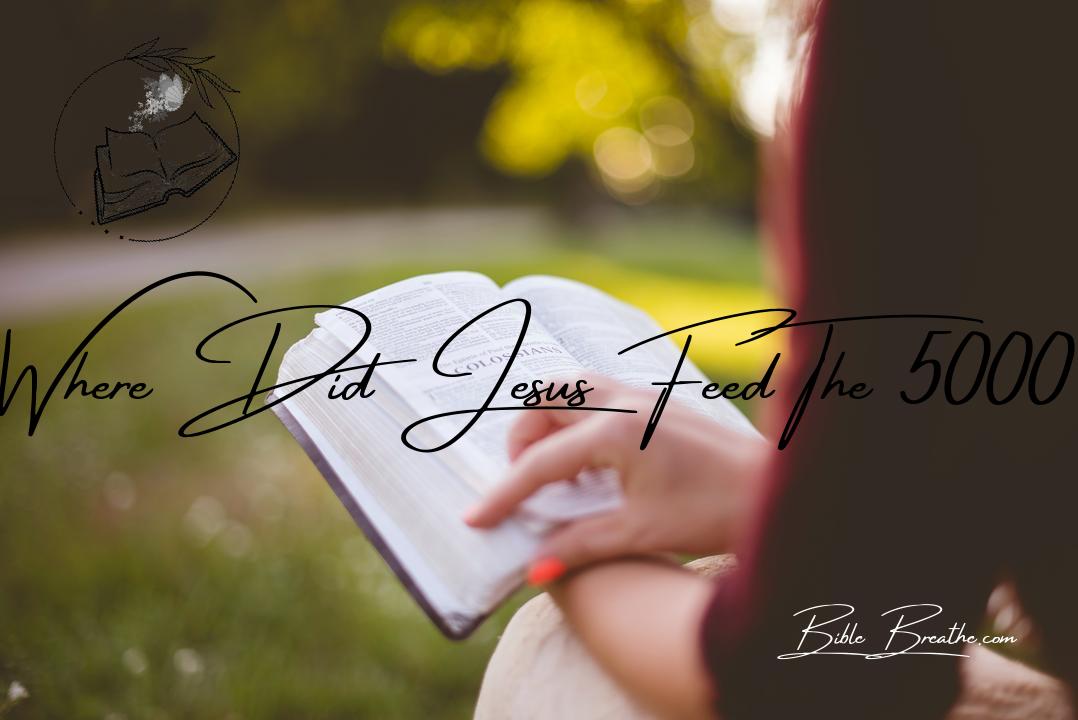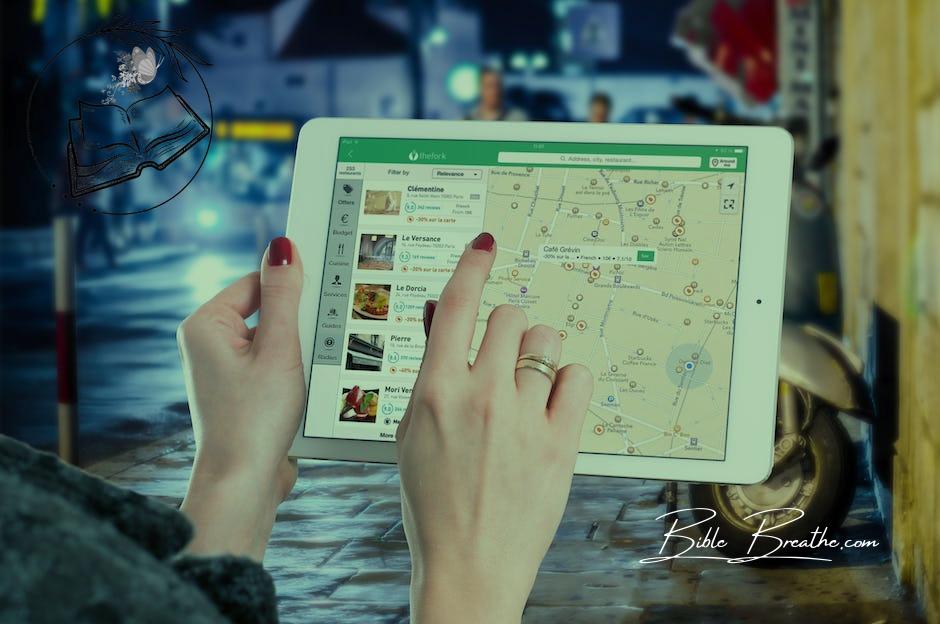Where did Jesus feed the 5000?
It’s an epic Bible story, fam!
Imagine this: a massive crowd in the middle of nowhere, hungry as ever, and Jesus steps in, ready to do His thing.
This miracle went down by the Sea of Galilee, near a spot called Bethsaida, right around Tabgha.
Now, let’s dive deep into why this moment’s so crucial.
This ain’t just about grub; it’s a spiritual feast too.
Jesus, in His compassion, took a few loaves and fish and turned them into a buffet.
This miracle speaks volumes about Jesus as the “Bread of Life” and us entering His Kingdom of God.
It’s like a shepherd leading His flock, feeding both their bodies and souls.
Picture the disciples hustling, and at the end, there were not just leftovers, but twelve baskets full!
This miracle’s more than meets the eye; it’s a lesson in abundance and divine guidance, showing us the way.
Keep rocking with us to discover the real essence of this epic event!
🌟
Key Takeaways
-
The feeding of the 5000 is a powerful miracle that demonstrates Jesus’ divine power and boundless compassion. This miraculous event, recorded in all four Gospels, showcases Jesus’ ability to provide for the physical needs of a multitude with just a few loaves of bread and fish. It serves as a profound reminder of His authority over nature and His deep concern for the well-being of His followers.
-
Beyond its material significance, the miracle challenges us to seek Jesus for spiritual nourishment. While the crowd initially followed Jesus for the physical provision of food, He urged them to look beyond their immediate needs and consider the spiritual hunger within. Jesus is not merely a provider of temporal sustenance but also the source of eternal life. Believers are encouraged to seek Him for the nourishment of their souls, recognizing that He satisfies our deepest spiritual hunger.
-
The importance of faith and trust in Jesus’ provision is a central theme in this miracle. When faced with the impossibility of feeding such a large crowd, Jesus’ disciples initially doubted. However, Jesus demonstrated that with faith in Him, even the most challenging circumstances can be overcome. This event serves as a reminder that we should trust in Jesus’ ability to meet our needs, both physical and spiritual, even when the situation seems dire.
-
In summary, the feeding of the 5000 is a miraculous event that not only reveals Jesus’ divine power and compassion but also encourages us to seek Him for spiritual nourishment. It underscores the importance of faith and trust in His provision, reminding us that He is the ultimate source of fulfillment and sustenance for our lives.
The Miracle of Feeding 5000: A Divine Feast
Photo modified by BibleBreathe.com. Original photo by Pixabay on Pexels
When we venture into the wondrous account of feeding 5000 hungry souls, we find ourselves standing on the shores of the Sea of Galilee—a place steeped in significance in the life and teachings of Jesus Christ.
The Traditional Site at Tabgha
“And Jesus said, Make the men sit down. Now there was much grass in the place. So the men sat down, in number about five thousand.” – John 6:10 (KJV)
Traditionally, this awe-inspiring event is believed to have taken place on the northwestern banks of the Sea of Galilee, at a location known as Tabgha.
Imagine a multitude of people, gathered in a desolate place, driven by both physical hunger and a yearning for spiritual nourishment.
In this moment, Jesus, the compassionate shepherd of souls, took a meager offering of a few loaves and fish, seemingly humble provisions, and transformed them into an abundant feast—a powerful symbol of God’s boundless grace.
A Possible Location: South of Bethsaida
Yet, let’s also consider another perspective, suggesting that this profound miracle unfolded on the eastern side of the Sea of Galilee, to the south of Bethsaida.
And they say unto him, We have here but five loaves, and two fishes.” – Matthew 14:17 (KJV)
This viewpoint offers a fresh angle, a possibility rooted in the accounts found in the Bible.
Picture the disciples, perhaps a bit perplexed and uncertain, presenting meager offerings that were multiplied by the hands of Jesus into a magnificent banquet, leaving twelve baskets of leftovers.
This is a testament to the abundant provision of the Kingdom of God, a theme that reverberates through the teachings of Jesus.
The Rationale for the Proposed Location
The reasoning behind this proposal lies in a deeper exploration of biblical clues.
By delving into the geography and context, we gain a richer understanding of this miracle.
It’s not just a tale of provision; it’s a lesson in compassion and the ability to transform scarcity into abundance—an idea that echoes throughout the teachings of the “Bread of Life.”
By unraveling the location of this miracle, we grasp not only the physical aspects but also the profound spiritual depth embedded within this extraordinary event.
Whether it occurred at Tabgha or to the south of Bethsaida, the essence remains the same: a miraculous display of divine compassion, forever etched in the hearts of those who seek the grace of the Good Shepherd.
The Abundant Miracle: Feeding the 5000 in the Wilderness
Photo modified by BibleBreathe.com. Original photo by Pixabay on Pexels
Let’s step back in time, my friend, to a remarkable moment in the tapestry of Jesus’ ministry, a moment that unfolded in the wilderness when He sent out His twelve disciples to preach and heal.
But let me set the stage for you: Jesus, aware of His disciples’ weariness, sought solace in the quiet of the wilderness, taking time to grieve the loss of John the Baptist.
But there’s more to this story.
News of His whereabouts spread like wildfire, drawing a multitude hungry for both spiritual nourishment and physical sustenance.
“And Jesus went forth, and saw a great multitude, and was moved with compassion toward them, and he healed their sick.” – Matthew 14:14 (KJV)
Now, here’s the backdrop: John the Baptist had just passed away, leaving a void in their hearts.
Yet, even in this moment of loss, Jesus saw an opportunity to bring hope and impart enduring lessons.
As the crowd gathered near the Sea of Galilee in the desolate place of Bethsaida, a simple offering of loaves and fish transformed into a divine display of compassion and abundance.
With a heart overflowing with care for the multitude, Jesus performed a wondrous miracle, multiplying the humble provisions to feed the hungry thousands.
But this miracle wasn’t just about filling empty stomachs; it was a symbol of the boundless abundance found in the Kingdom of God, a spiritual feast of grace and teachings that would nourish souls on their earthly journey.
“And they did all eat, and were filled: and they took up of the fragments that remained twelve baskets full.” – Matthew 14:20 (KJV)
In that seemingly barren place, Jesus turned scarcity into plenitude, echoing the abundance He offers in our lives, even in the midst of life’s wilderness moments.
It’s a reminder that His love and provision are ever-present, ready to transform scarcity into abundance, just as He did with those loaves and fish.
The Miracle Unveiled: How Jesus Fed the 5000
Photo modified by BibleBreathe.com. Original photo by SHVETS production on Pexels
As we immerse ourselves in the miracle of feeding the 5000, we find ourselves witnessing not just a historical event but a profound display of divine compassion and provision.
A Multitude Gathers, Compassion Ignites
“And Jesus went forth, and saw a great multitude, and was moved with compassion toward them, and he healed their sick.” – Matthew 14:14 (KJV)
Imagine this scene: a vast multitude, hungry for both spiritual and physical nourishment, converging in a desolate place.
They sought the Shepherd, yearning for the teachings that would feed their souls.
Jesus, seeing their need and being deeply moved with compassion, set the stage for a miracle that would resonate through the ages.
The Challenge: Feeding the Hungry Hearts
The disciples faced a daunting challenge—feeding this enormous gathering with only five loaves and two fish.
It’s a scenario many of us can relate to—a seemingly insurmountable problem, resources inadequate in the face of the need.
But it was precisely in this moment of scarcity that Jesus showed the abundance of God’s grace.
“He said, Bring them hither to me.” – Matthew 14:18 (KJV)
The Miracle: Multiplication and Abundance
In the hands of Jesus, those humble loaves and fish multiplied abundantly, surpassing all expectations.
The act of breaking the bread, reminiscent of a communal meal, showcased the transformative power of Christ.
The crowd witnessed a miracle unfolding before their eyes, a tangible representation of how Christ can take our meager offerings and make them more than sufficient.
Twelve Baskets of Leftovers: Symbolism of Abundance
“And they did all eat, and were filled: and they took up of the fragments that remained twelve baskets full.” – Matthew 14:20 (KJV)
The twelve baskets of leftovers weren’t just an afterthought.
They were a symbol of abundance and divine provision.
Each basket represented one of the twelve disciples, a reminder that when we follow Jesus and partake in His mission, we’re never lacking.
His grace and provisions overflow, leaving us with more than we began.
In the miracle of feeding the 5000, we witness not just a filling of bellies but a revelation of the compassionate nature of our Lord.
It’s a reminder that even when faced with scarcity, when we offer what little we have in faith, God’s abundance is revealed in ways that surpass understanding.
Feeding the 5000: Lessons in Faith and Spiritual Sustenance
Photo modified by BibleBreathe.com. Original photo by Karolina Grabowska on Pexels
Imagine being in the midst of a crowd that had just witnessed a miracle, the multiplication of loaves and fish by the hands of Jesus.
One might think that witnessing such a wonder would solidify faith, but sometimes, it can be a challenge.
Faith, my friend, is a journey, not a single event.
It’s about believing even when doubts creep in, even when our senses or circumstances cast shadows of uncertainty.
“Blessed are they that have not seen, and yet have believed.” – John 20:29 (KJV)
Jesus knew that some in the crowd sought Him for the immediate, earthly benefits – full stomachs and healed bodies.
However, He calls us to seek beyond the material.
He beckons us to seek the nourishment of our souls, to long for the eternal sustenance that only faith in Him can provide.
The physical bread He shared was a symbol for the spiritual bread – His teachings and love – that sustain us through life’s trials and tribulations.
Now, picture this: The crowd, their bellies full, yet their hearts and souls yearning for more.
It’s a reflection of our lives, isn’t it?
We often fill our lives with material blessings, but a deeper hunger remains – the hunger for purpose, love, and meaning.
Jesus invites us to seek Him as the ultimate nourishment for our souls.
He is the bread of life that satisfies our spiritual hunger.
“I am the bread of life: he that cometh to me shall never hunger, and he that believeth on me shall never thirst.” – John 6:35 (KJV)
In the grandeur of this miraculous feast, Jesus offers us more than just loaves and fish.
He imparts an everlasting lesson.
He invites us to seek Him not merely for what He can give us, but for who He is – a shepherd, a provider, and the source of eternal life.
It’s a lesson in faith, my friend, a lesson in seeking the spiritual nourishment that only He can provide.
Frequently Asked Questions (FAQs) About Where Did Jesus Feed The 5000
Why did Jesus perform this miracle?
This question requires a specific miracle reference to answer.
Please provide more context, and I’ll be happy to explain.
How many people were actually present during the miracle?
The number of people present during a biblical miracle varies depending on the specific miracle.
For example, the feeding of the 5,000 involved a large crowd, while the raising of Lazarus had a smaller group.
It’s important to consult the specific passage to determine the number present in each case.
What is the significance of the twelve baskets of leftovers?
The twelve baskets of leftovers in the feeding of the 5,000 represent abundance and God’s provision.
They symbolize God’s overflowing grace and sufficiency, showing that He provides abundantly beyond what is needed.
This miracle signifies God’s ability to satisfy all needs.
{
“@context”: “https://schema.org”,
“@type”: “FAQPage”,
“mainEntity”: [
{
“@type”: “Question”,
“name”: “Why did Jesus perform this miracle?”,
“acceptedAnswer”: {
“@type”: “Answer”,
“text”: “This question requires a specific miracle reference to answer. Please provide more context, and I’ll be happy to explain.”
}
},
{
“@type”: “Question”,
“name”: “How many people were actually present during the miracle?”,
“acceptedAnswer”: {
“@type”: “Answer”,
“text”: “The number of people present during a biblical miracle varies depending on the specific miracle. For example, the feeding of the 5,000 involved a large crowd, while the raising of Lazarus had a smaller group. It’s important to consult the specific passage to determine the number present in each case.”
}
},
{
“@type”: “Question”,
“name”: “What is the significance of the twelve baskets of leftovers?”,
“acceptedAnswer”: {
“@type”: “Answer”,
“text”: “The twelve baskets of leftovers in the feeding of the 5,000 represent abundance and God’s provision. They symbolize God’s overflowing grace and sufficiency, showing that He provides abundantly beyond what is needed. This miracle signifies God’s ability to satisfy all needs.”
}
}
]
}





